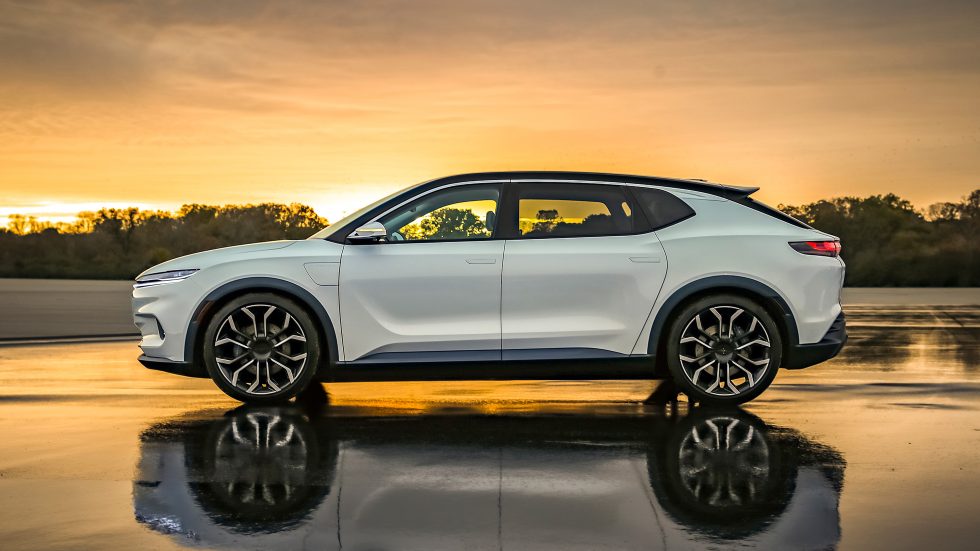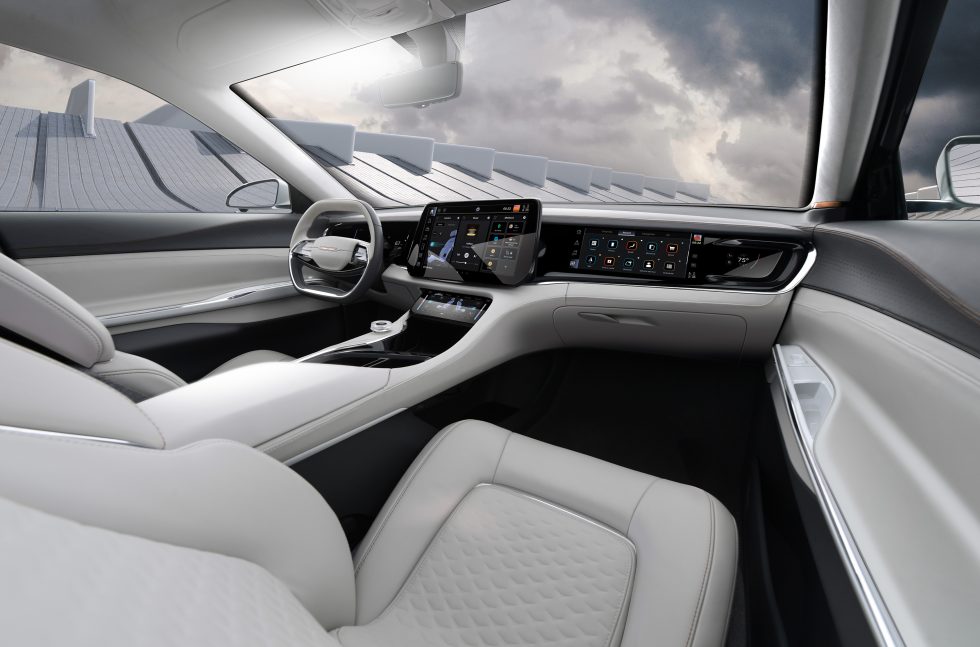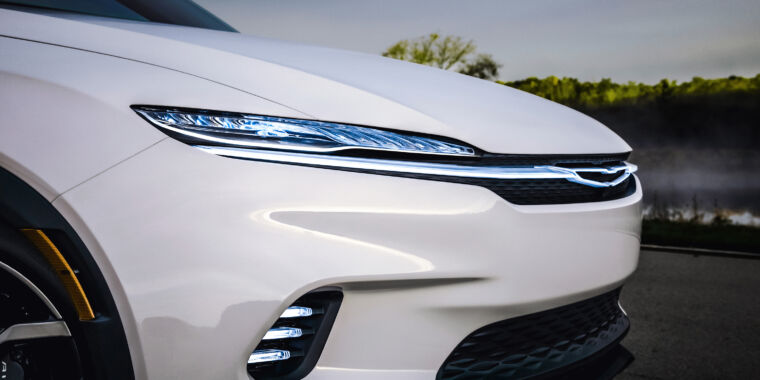
Stellantis
Not much appeared to be happening at Chrysler in the past few years, though that’s about to change. Its parent company, Stellantis, announced yesterday that Chrysler will become its vanguard electric brand. By 2028, the 96-year-old automaker’s entire lineup will be all-electric.
That’s not too much of a stretch. Chrysler only sells two vehicles right now, the decade-old 300C sedan and the Pacifica minivan, which is available as a plug-in hybrid. Today, at the Consumer Electronics Show, the company shared more details on the Airflow, a concept crossover that appears to be close to ready for production—so close, in fact, that the announcement was probably a thinly veiled preview of the company’s first EV due in 2025.
The Airflow is powered by two 150 kW (201 hp) electric motors, one for each axle, and while Chrysler hasn’t disclosed the size of the battery, it said it is targeting 350–400 miles of range. If the company can achieve that, it would be quite the coup, rivaling the best from Tesla. Good thing it has a few years before it has to deliver.

Stellantis
An electric homage
In resurrecting the Airflow name, Chrysler isn’t just giving a nod to its aerodynamicists. It’s saying that the storied brand still has what it takes to lead the pack. The original 1934 Airflow was a revolutionary teardrop of a car, designed using extensive wind tunnel testing and made with an all-steel, unibody frame. It drew inspiration from the contemporary Streamline Moderne movement, and though the car was a commercial flop, its design and features were nonetheless influential.
When Chrysler needs to pull a rabbit out of its hat, it has a habit of nodding to its history—see the faux woody Town & Country minivan of the 1980s, the retro-inspired PT Cruiser of the 1990s, and the current full-size sedan that resurrected the 300 name. While the company hasn’t committed to putting the Airflow into production—either the design or the nameplate—the fact that it’s using a historic name suggests it’s looking for another rabbit.

Stellantis
Like the original, the Airflow concept is a polished stone, smoothed at the edges with a subtle taper toward the rear. The black roof hides some of the bulk above the cargo area, and its long rear doors and clipped overhangs hint at a spacious interior that reaps the benefits of a dedicated EV platform. Though not particularly groundbreaking, it’s still a handsome design.
Software updates
Beneath the skin, Chrysler is using the Airflow to showcase other features that are destined for production across Stellantis’ lineup. The most obvious is called STLA SmartCockpit, a software suite and user interface that will cover navigation, voice assistance, and infotainment features. The cockpit is being developed as part of a joint venture with Foxconn, and in the Airflow, it surfaces on six screens, including four up front and two in the back.

Stellantis
All those screens are powered by STLA Brain, an operating system that can be updated over the air. In an earlier press release, Chrysler said that STLA Brain was developed with the intention of breaking “today’s bond between hardware and software generations, enabling software developers to create and update features and services quickly without waiting for a new hardware launch”—basically how desktops, laptops, and phones have worked for years.
Lastly, what concept car would be complete without some sort of autonomous driving feature? Here, the Airflow delivers with STLA AutoDrive, which Stellantis is developing in a partnership with BMW. The feature can handle up to Level 3 automation, which means that the car will be able to drive itself in certain situations like on highways and in traffic jams. The driver must still be ready to take over at any moment, though.
For a concept car, much of the Airflow is remarkably realistic. Chrysler still has a few years to sort everything out, but if it can deliver, it will have a strong contender for what’s shaping up to be a very competitive segment.
